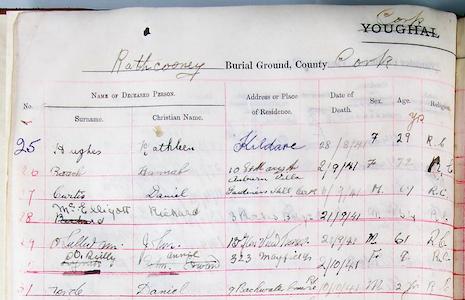Why is traditional record-keeping holding cemeteries back?

Many cemeteries still rely on paper records or outdated computer systems. For years, these methods worked fine. But today, they come with a lot of hidden costs and limitations. Let’s look at some of the ways traditional record-keeping can hold cemeteries back—and why modern solutions might be the answer.
Paper Records Get Damaged or Lost

Paper records are vulnerable. Water damage, fires, and even basic wear and tear can destroy valuable information. In some cases, decades of burial records can be wiped out by one accident.
Why It’s a Problem: Once a paper record is lost, it’s gone forever. This can create big issues for tracking ownership, space availability, and family history.
The Solution: Digitizing records protects them from physical threats. When files are stored in the cloud, they’re backed up regularly and far easier to access. This way, your records are safe, even if something happens on-site.
Old Records Are Hard to Search

Finding a specific record in a pile of paper files or outdated databases is time-consuming. It often requires a manual search through rows of filing cabinets or spreadsheets.
Why It’s a Problem: Slow searches create a frustrating experience for staff and visitors. A visitor may want quick info about a family member’s grave, but traditional records rarely allow for that.
Modern cemetery management software lets you search records instantly. With a few clicks, you can pull up burial plots, family details, or ownership information. Faster access improves customer service and makes staff more efficient.
Double-Booking of Plots Can Happen

With traditional records, it’s surprisingly easy to accidentally double-sell a plot. Simple errors or misfiled papers can lead to serious mix-ups.
Why It’s a Problem: Double-booking isn’t just inconvenient — it’s upsetting for families and can damage a cemetery’s reputation. No one wants to learn their loved one’s resting place has already been sold.
The Solution: Digital records make it clear when a plot is occupied, reserved, or available. Modern software offers visual maps and automatic updates to prevent mistakes. This transparency helps you manage space effectively and gives families peace of mind.
Limited Access Slows Down Workflows

If cemetery records are stored in one office, staff have to go there to access information. In today’s fast-paced world, this slows down communication and makes remote work difficult.
Why It’s a Problem: Limited access means staff must often wait to check records, which delays responses to families and slows down operations.
The Solution: Digital systems let you access records from anywhere with an internet connection. This flexibility speeds up workflows, whether staff are in the office, at home, or out on cemetery grounds.
Traditional Systems Make Reporting Difficult
Analyzing cemetery data with traditional records is nearly impossible. Paper records can’t be quickly sorted or searched, and older systems may lack reporting tools.
Why It’s a Problem: Without detailed reporting, it’s hard to make informed decisions. You may not know which plots are most in demand, what areas need maintenance, or how many spaces are left.
The Solution: Digital systems come with built-in reporting and analytics. They allow you to see trends, track space availability, and plan for future needs. With better data, cemeteries can make smarter choices and manage resources effectively.
Moving Forward with Digital Solutions
Traditional record-keeping was once the norm, but today’s cemetery managers need faster, safer, and more reliable systems. Switching to a digital solution can protect records, improve daily tasks, and help your cemetery stay relevant in a changing world. The shift might feel big, but the benefits make it worth it.
About AFS
At All Funeral Services (AFS), we embrace innovation to make remembering easier. Our solutions help cemeteries and families create lasting tributes, blending tradition with technology. Explore how we support modern memorialization at our website.